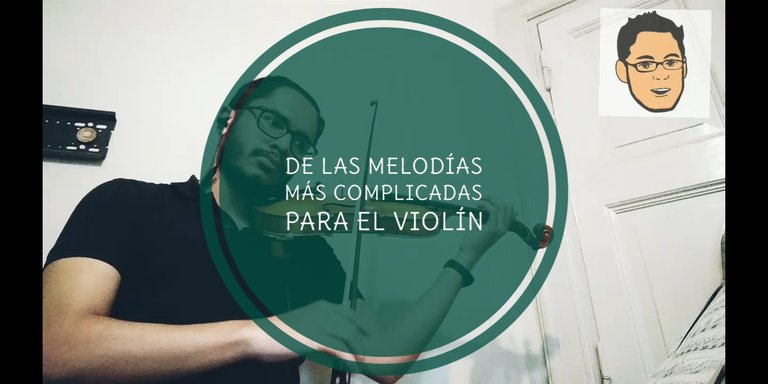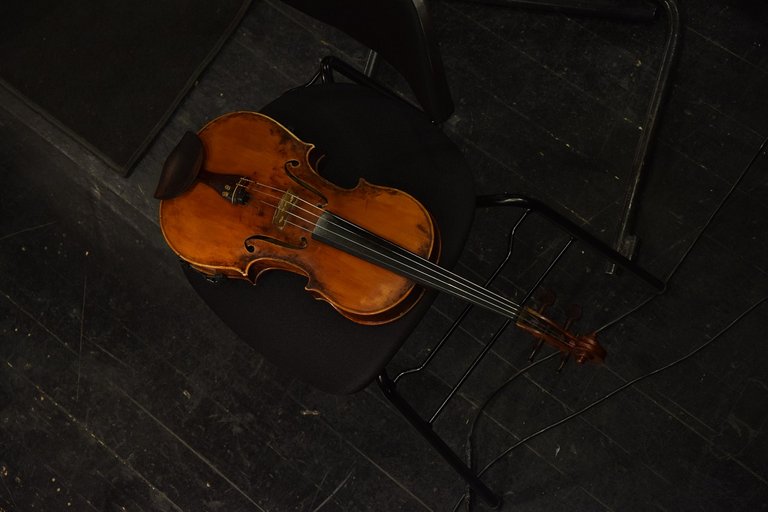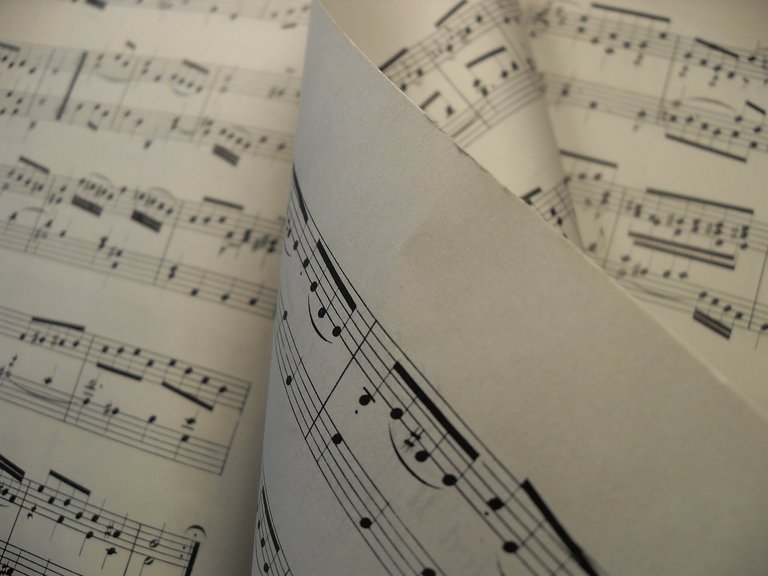
Hola queridos y apreciados amigos, espero estén genial cómo siempre
Hoy, quiero nuevamente traerles un poco de música, y así comenzar nuevamente con la serie de publicaciones musicales pero esta vez no a diario, pero si cada cierto tiempo...
Esta idea va a ser justo igual cómo la de las publicaciones anteriores, un fragmento que voy a interpretar para ustedes donde interpreto la partitura del "violín 1" y seguidamente ese mismo fragmento pero esta vez con orquestas completa, de alguna orquesta famosa.

Así que es por ello que hoy les traeré un fragmento sumamente complicado para el violin, el fragmento más difícil de toda la Sinfonía 4 de Tchaikovsky, una Sinfonía que es muy pero muy conocida del compositor ruso.
Esta obra consta de cuatro partes, siendo la cuarta y última la más complicada sobretodo para la fila de los violines (y ya verán por qué)

Cómo idea principal, esta Sinfonía trata un poco de lo que es el destino para Tchaikovsky. Es bastante "optimista", por darle un nombre, a diferencia de la 5 y la 6.
En los movimientos anteriores notaremos un viaje por lo que eran los sentimientos del destino, la inquietud de éste, el nervio y obviamente, la inquietud. Para luego mostrarnos un cambio armónico muy sentimental que sería finalmente solamente un sueño, luego vendría una melancolía que dominaría, luego la aparición de los caprichos, y finalmente el destino nuevamente pero con cierta alegría.
Tchaikovsky nos lleva a un recorrido sumamente intenso de lo que sería el mismo cómo protagonista, prácticamente.

Sabiendo ya ésto y hablando específicamente de la melodia que vamos a escuchar, quiero explicar antes que está va a ser la melodia principal de todo lo que es éste cuarto movimiento. Una melodia que va a estar muy conectada con lo que es el destino pero esta vez muy alegre. Cómo si se tratase más bien de una fiesta, una celebración de éste.
Donde finalmente Tchaikovsky quiere demostrar que el destino no es malo, que el destino puede traer cosas buenas, y hasta cosas mejores.
Es por este motivo que el compositor integra a los violines un fragmento muy pero muy rápido. Donde en un principio va a tocar la melodia que diversas notas rápidas, usando una progresión muy famosa de él, y luego el pasaje de la muerte
Este pasaje es muy pero muy complicado por dos cosas:
La velocidad
Las notas
Digo la velocidad porque todo este movimiento es rápido y digo las notas porque son muchas, teniendo uno cómo músico tener la necesidad de usar digitaciones más fáciles para sobrellevar la dificultad de este. Esto, adicionado a lo que es el extasis final de la Sinfonía, haciéndolo aún más complicado.
Así que acá les dejo el fragmento donde lo interpreto:
Y seguidamente el de la orquesta, dirigida por el compositor Daniel Barenboim :
Así que sin más nada que agregarles muchas gracias por leer y ewcuchar, un abrazo enorme y todo lo mejor!

Hello dear and dear friends, I hope you are great as always
Today, I want to bring you some music again, and thus start again with the series of musical publications but this time not daily, but every so often ...
This idea is going to be just like the one in the previous publications, a fragment that I am going to interpret for you where I interpret the score for "violin 1" and then that same fragment but this time with full orchestras, from some famous orchestra.

So that is why today I will bring you an extremely complicated fragment for the violin, the most difficult fragment of the entire Symphony 4 by Tchaikovsky, a Symphony that is very, very well known by the Russian composer.
This work consists of four parts, the fourth and last being the most complicated, especially for the violin line (and you'll see why)

As the main idea, this Symphony deals a bit with what destiny is for Tchaikovsky. It is quite "optimistic", to give it a name, unlike 5 and 6.
In the previous movements we will notice a trip through what were the feelings of destiny, its restlessness, the nerve and obviously, the restlessness. To then show us a very sentimental harmonic change that would finally be only a dream, then a melancholy would come that would dominate, then the appearance of whims, and finally destiny again but with a certain joy.
Tchaikovsky takes us on an extremely intense tour of what would be the same as the protagonist, practically.

Knowing this already and speaking specifically of the melody that we are going to listen, I want to explain before that it is going to be the main melody of all that is this fourth movement. A melody that is going to be very connected with what is destiny but this time very happy. As if it were more of a party, a celebration of it.
Where finally Tchaikovsky wants to show that destiny is not bad, that destiny can bring good things, and even better things.
It is for this reason that the composer integrates a very, very fast fragment to the violins. Where at first he will play the melody that various fast notes, using a very famous progression of his, and then the death passage
This passage is very, very complicated for two things:
The speed
The notes
I say the speed because all this movement is fast and I say the notes because there are many, having one as a musician have the need to use easier fingerings to overcome the difficulty of it. This, added to what is the final ecstasy of the Symphony, making it even more complicated.
So here I leave the fragment where I interpret it:
And then that of the orchestra, directed by the composer Daniel Barenboim :
So without anything else to add, thank you very much for reading and listening, a huge hug and all the best!
Do you want to get involved? Do you want to support music and this project? Follow us to keep you updated and read our Introduction post!
Hola @gregorior, que bien explicado todo y que difícil es el fragmento que tocaste. Enhorabuena!
Resteemed, your post will appear in the next curation post with a share for you!
Your post has been supported and upvoted from the Classical Music community (Subscribe at peakd and Steempeak) as it appears to be of interest to our community. We also support jazz and folk music posts!
If you enjoy our support of the #classical-music community, please consider a small upvote to help grow the support account!
You can find details about us below.
The classical music community at #classical-music, Peakd, Steempeak and Discord. Follow our community accounts @classical-music and @classical-radio or follow our curation trail (classical-radio) at Hive Vote or SteemAuto!